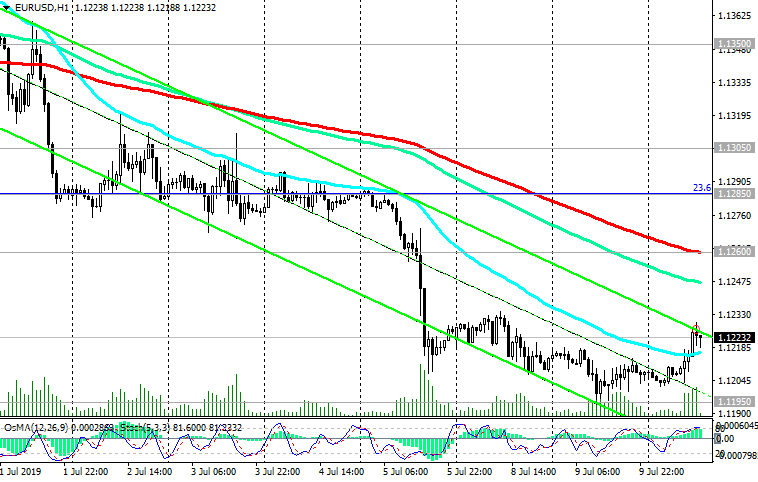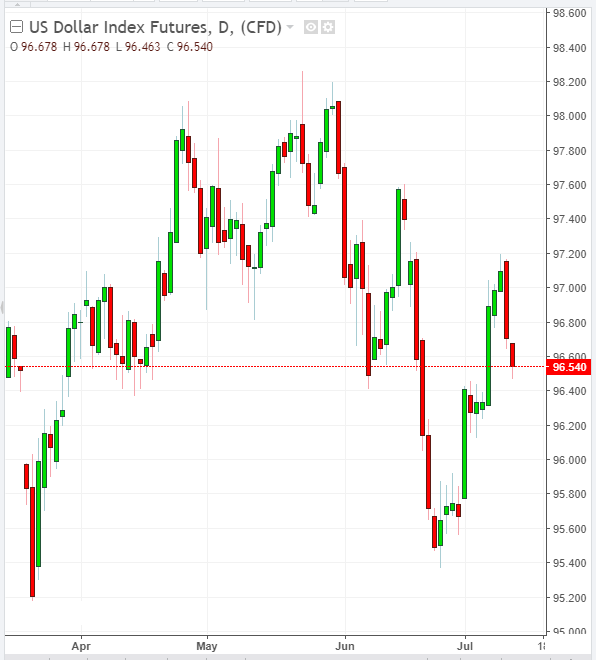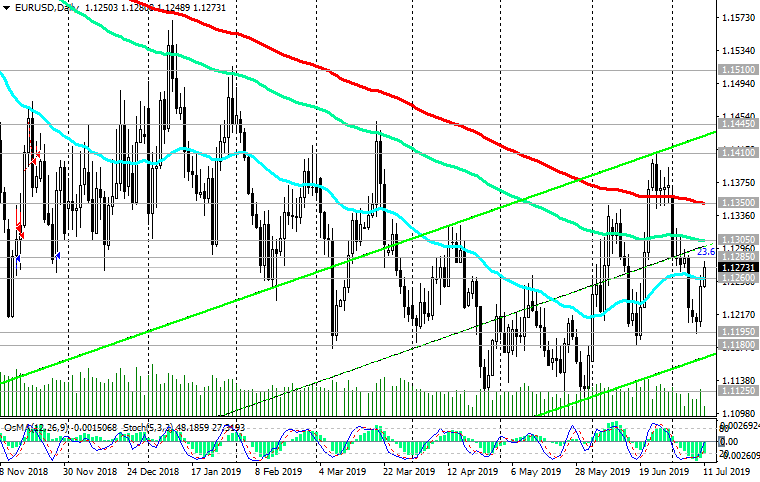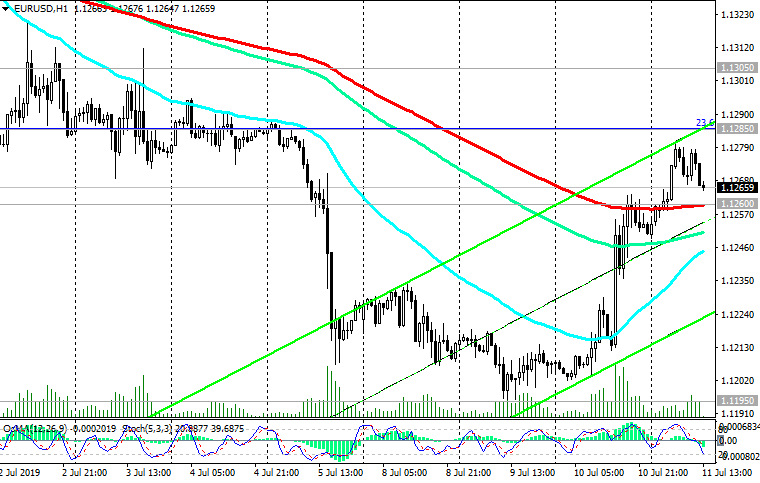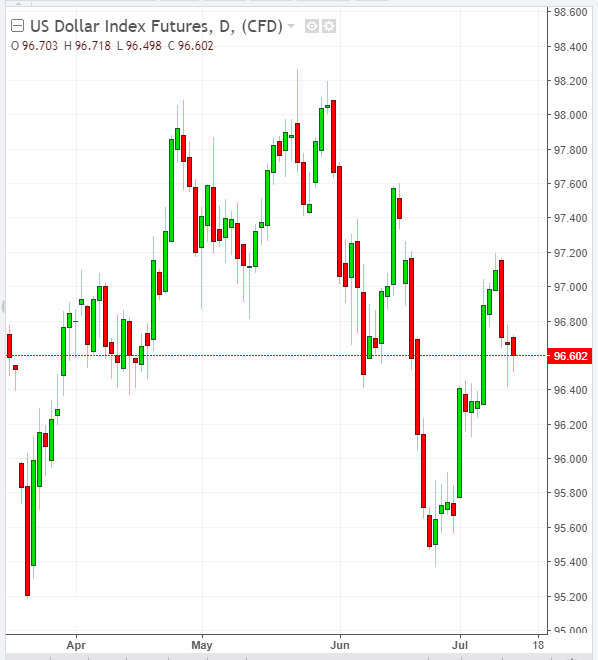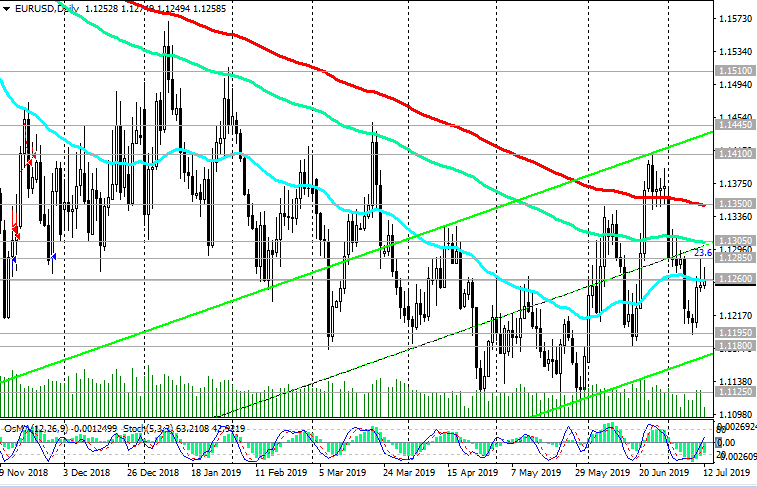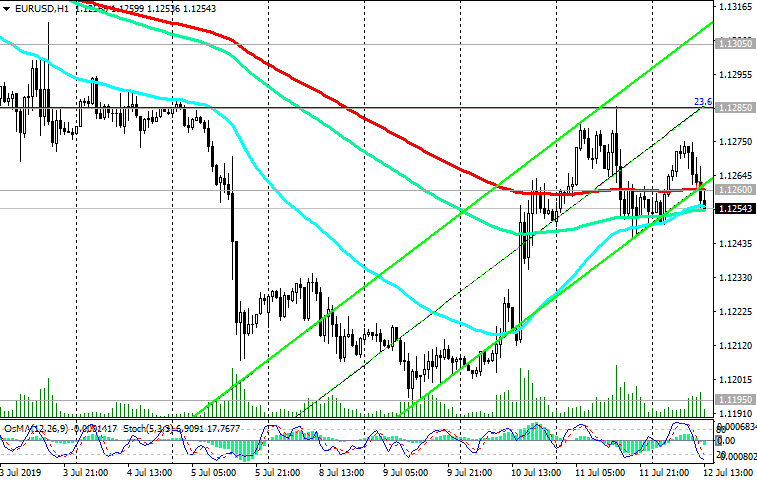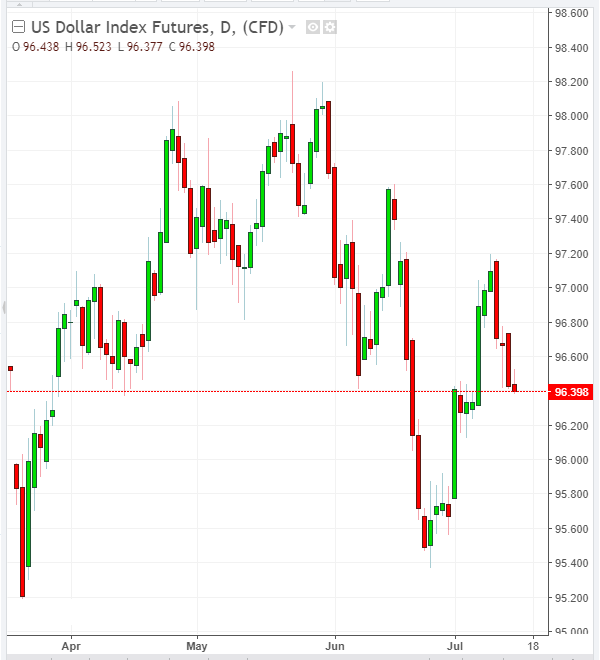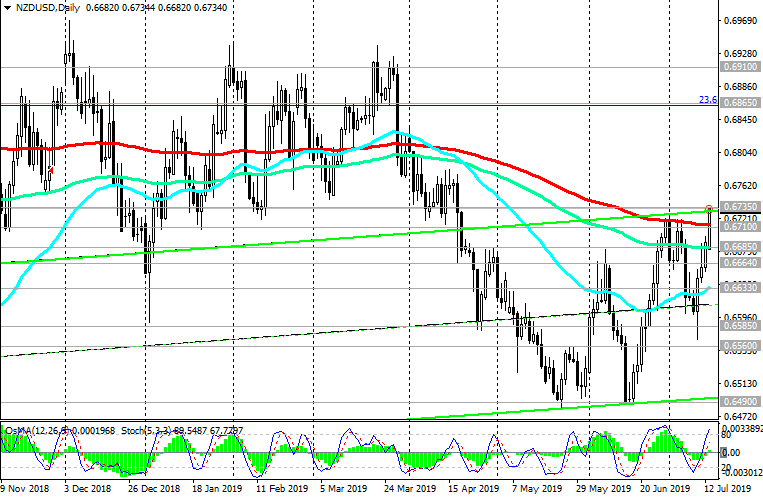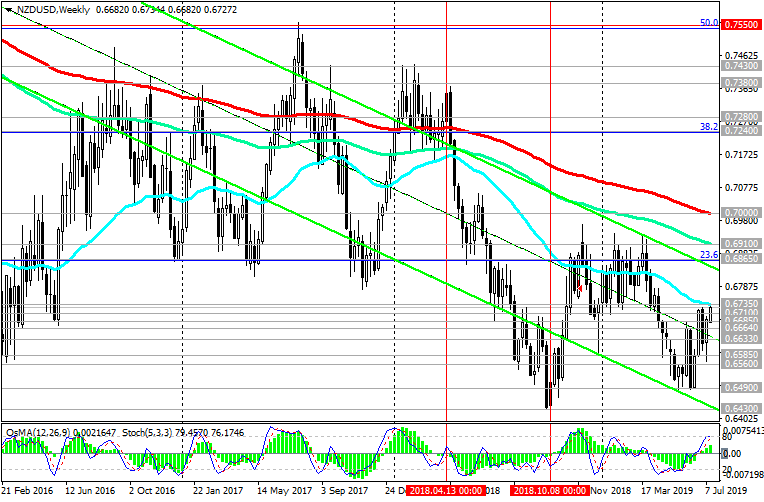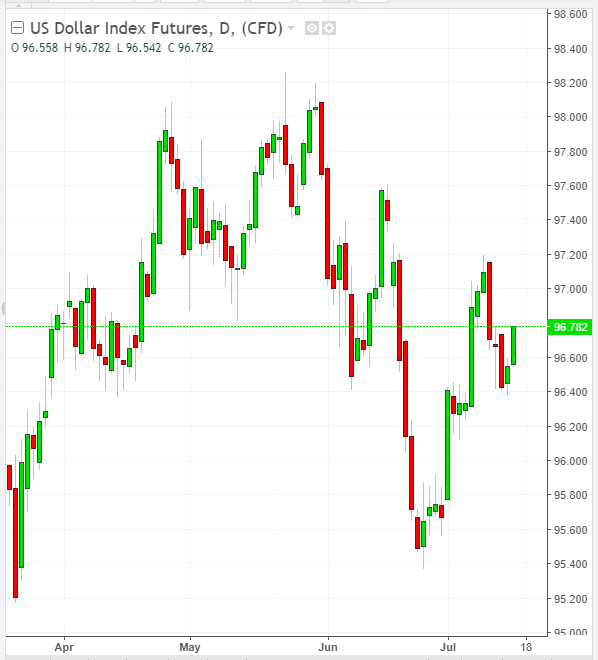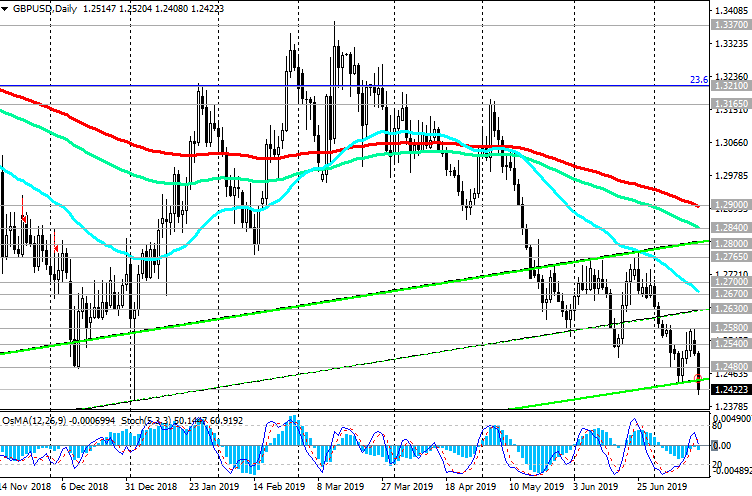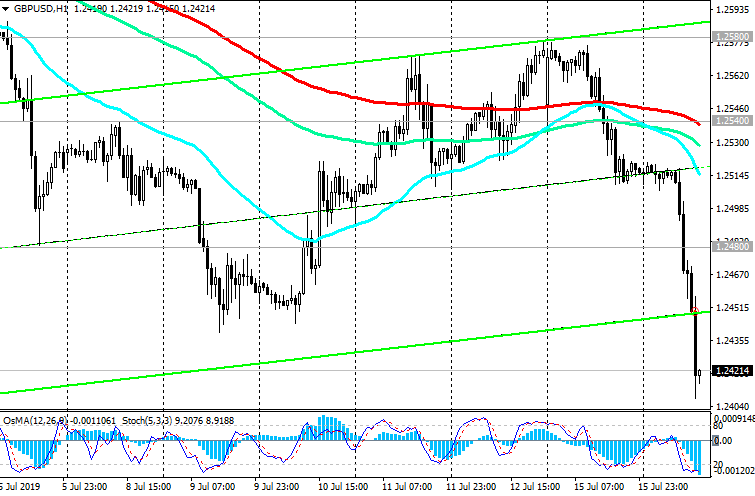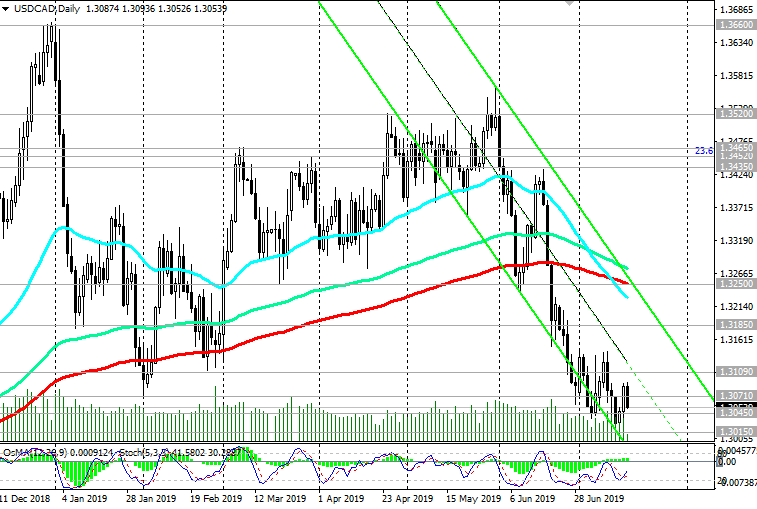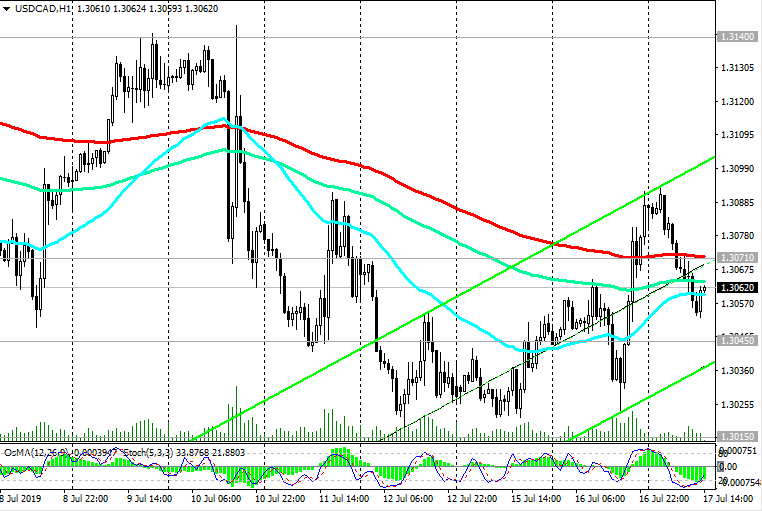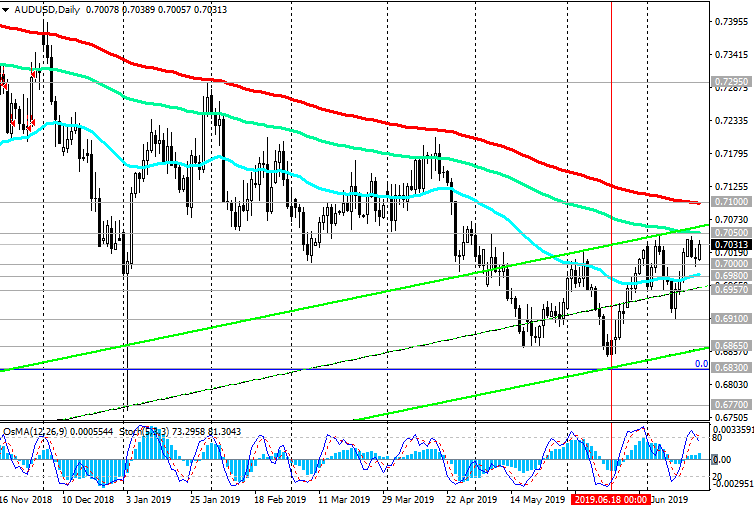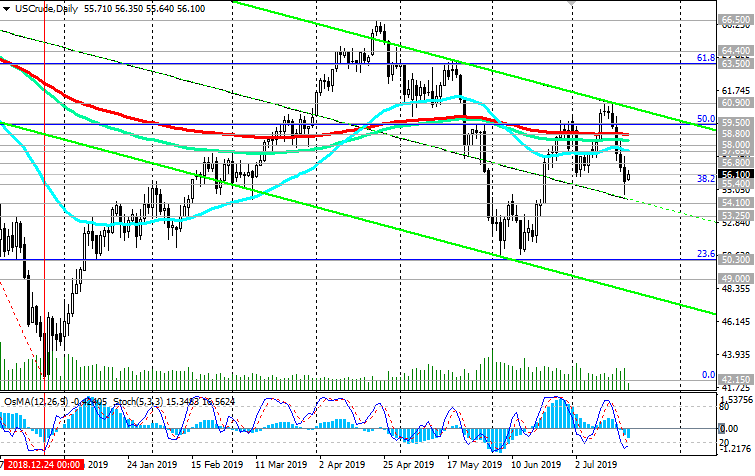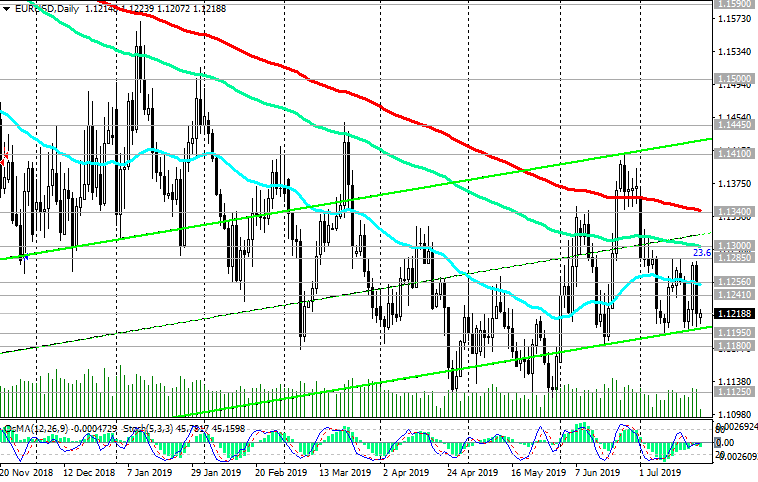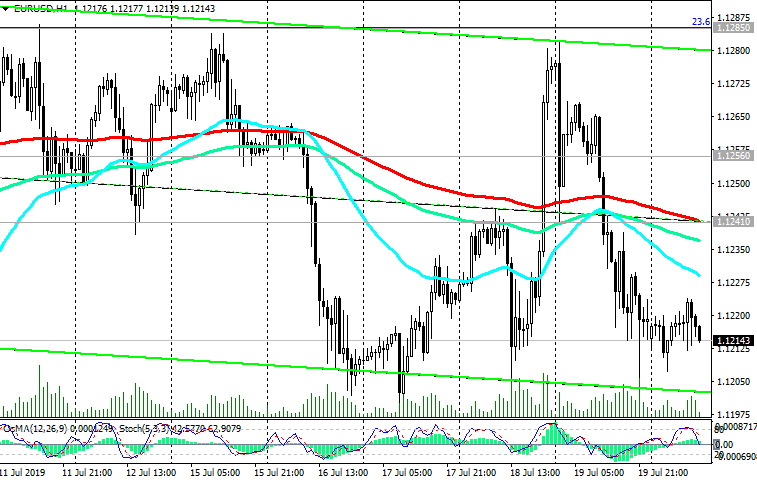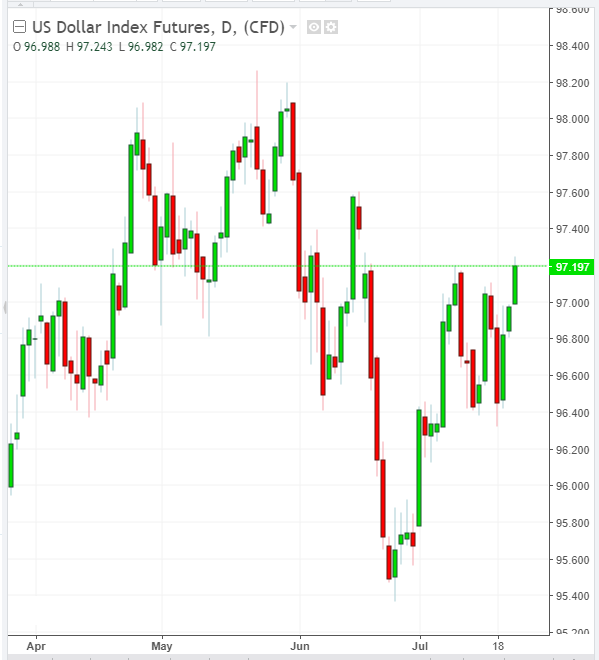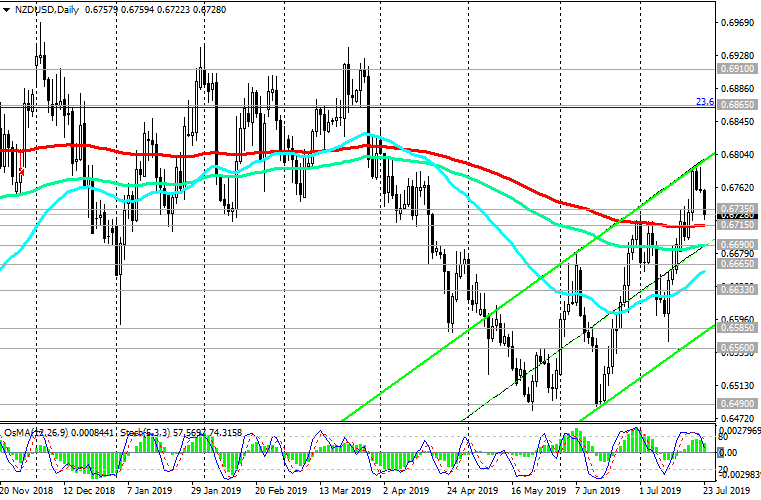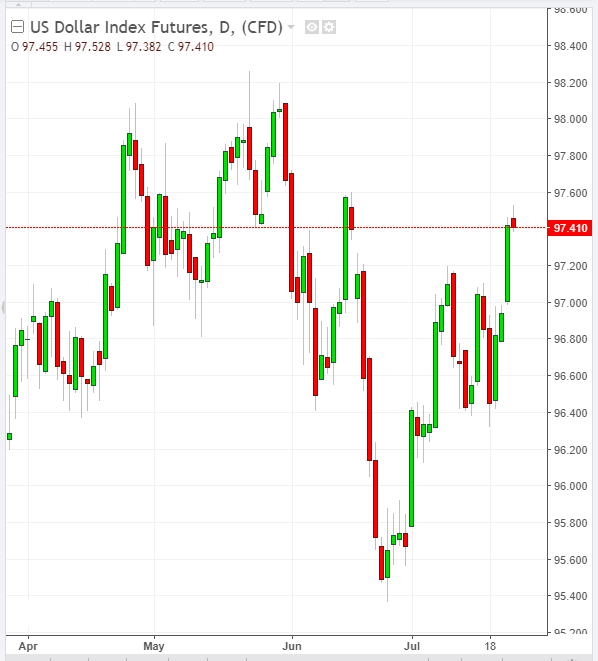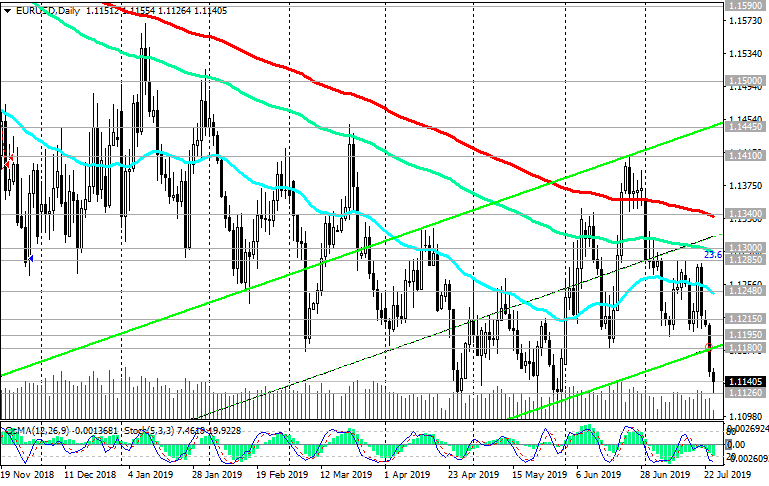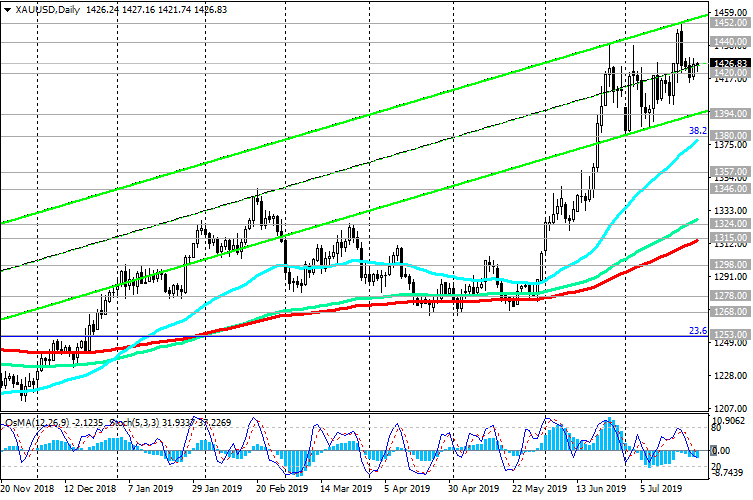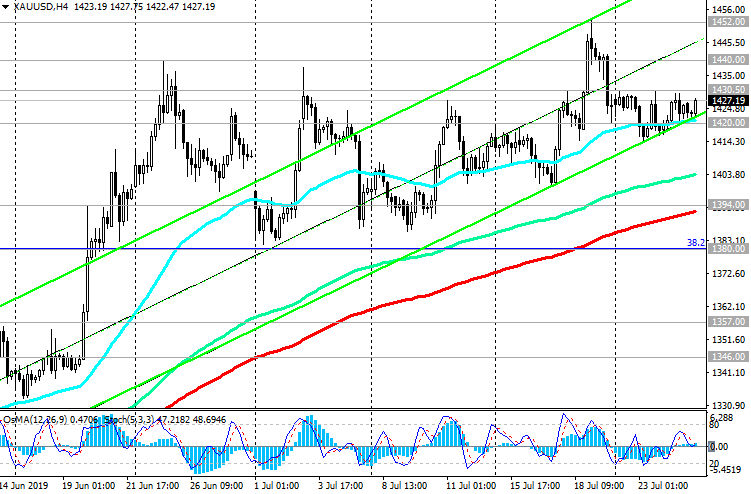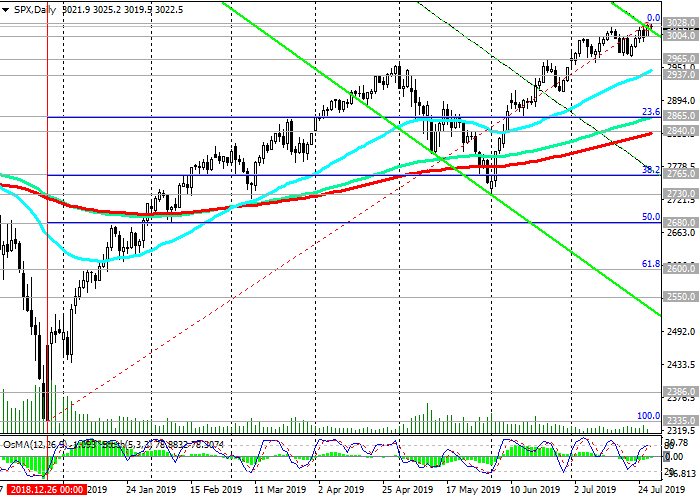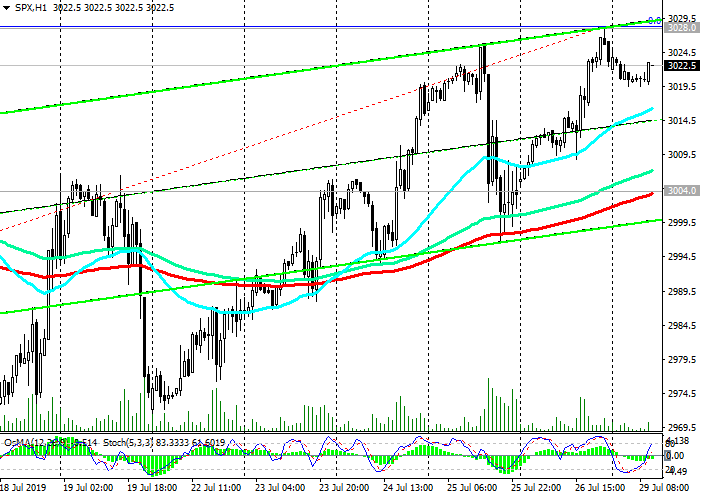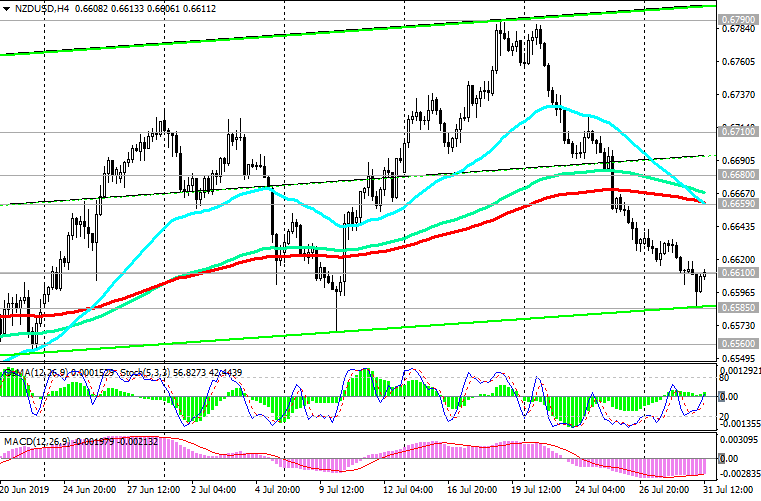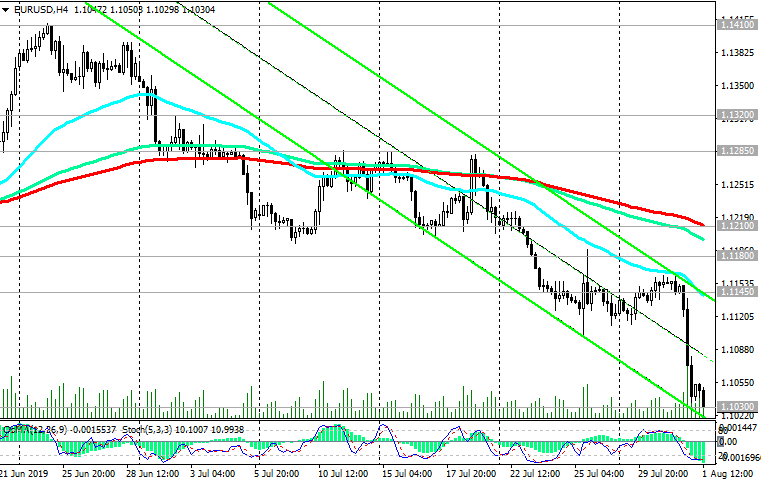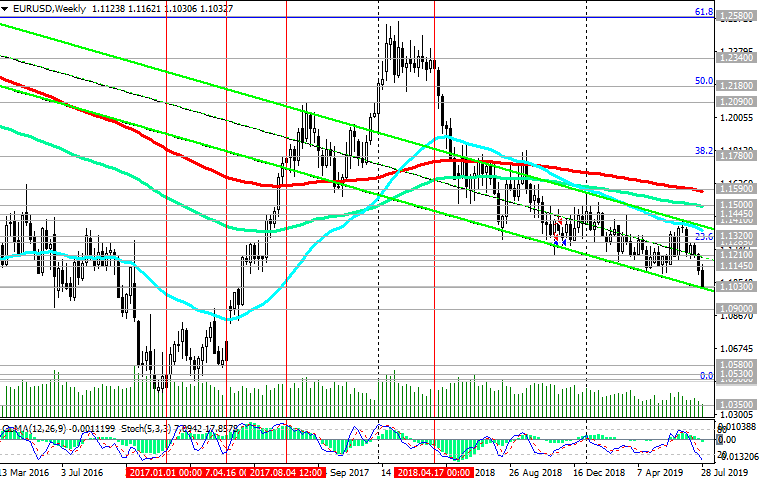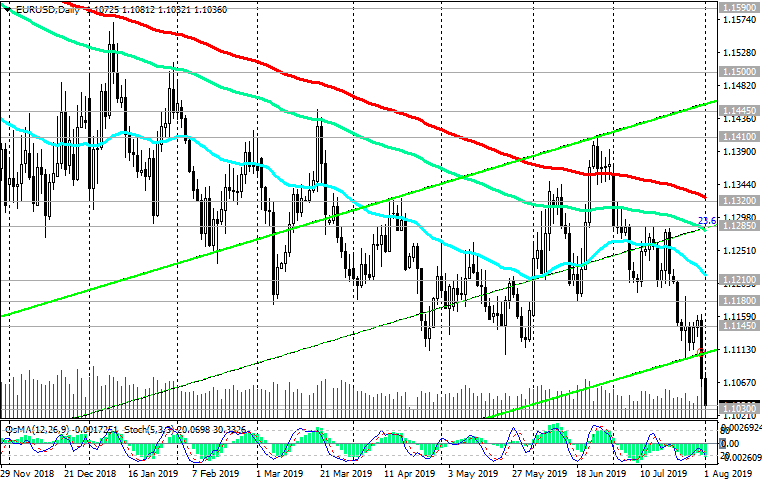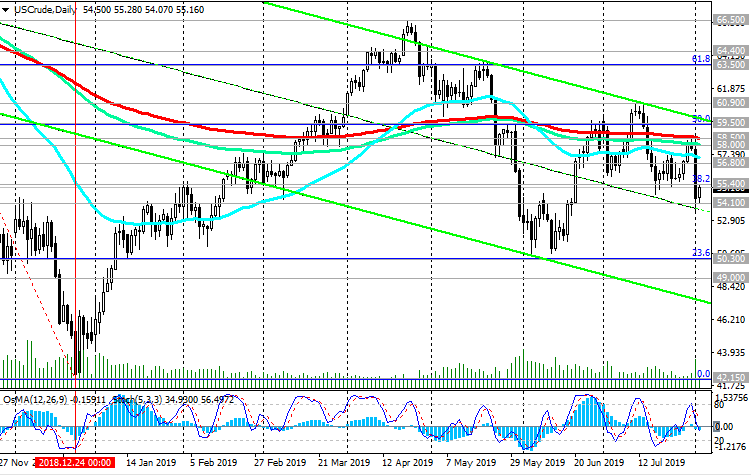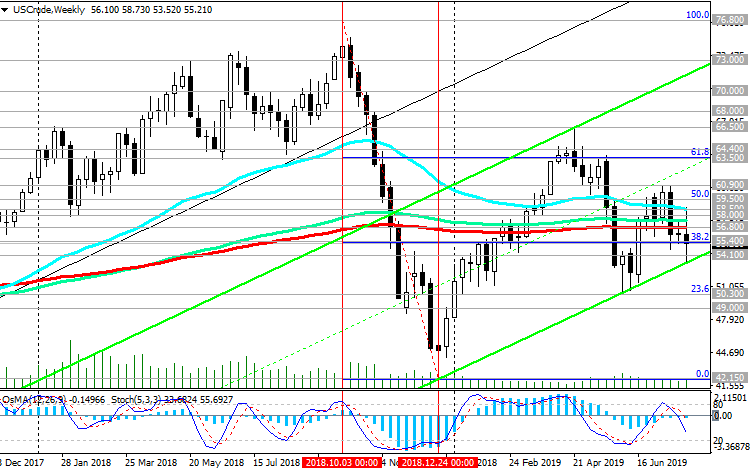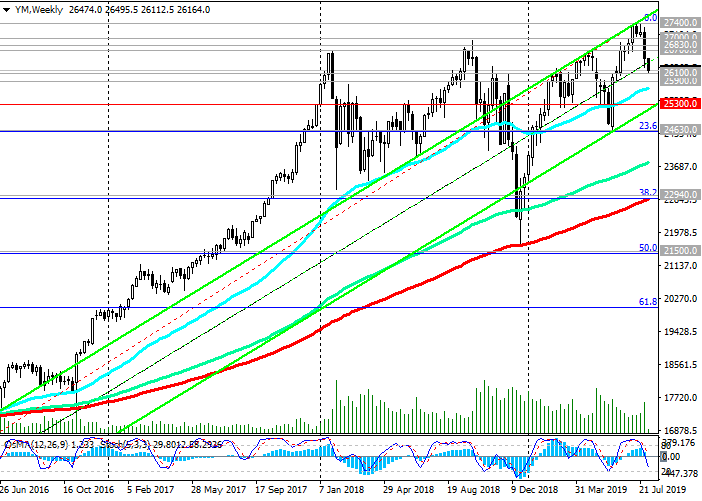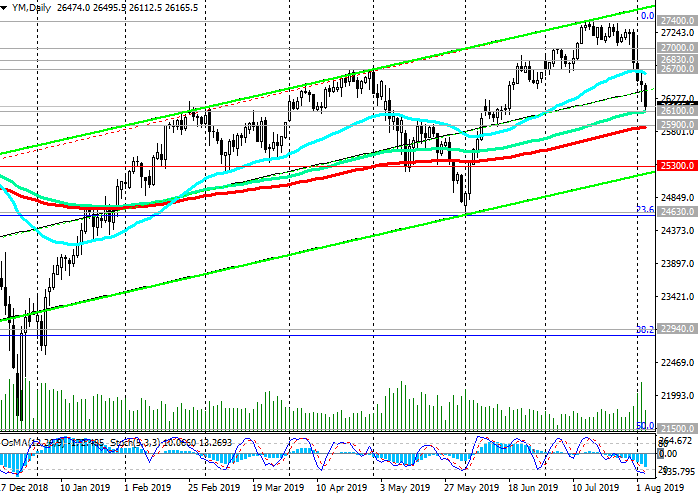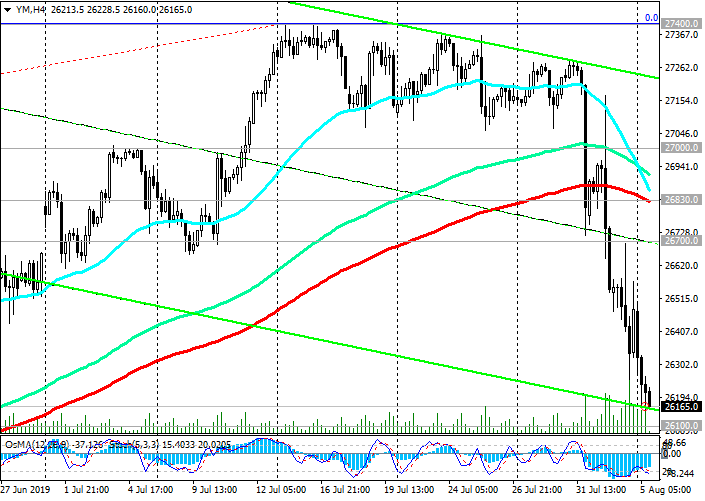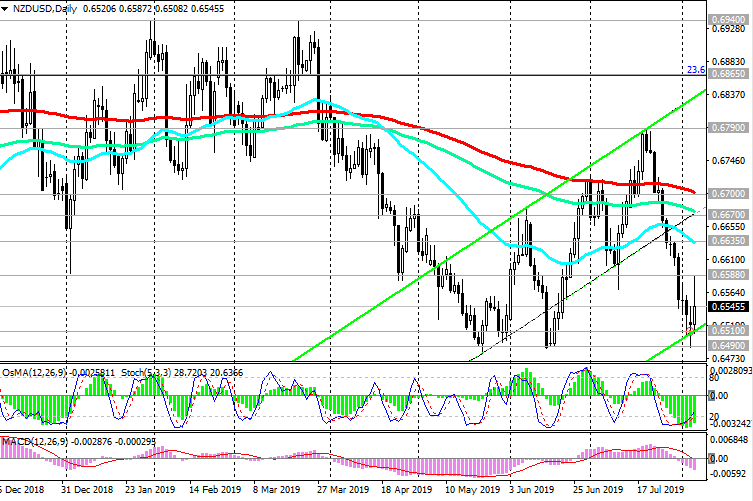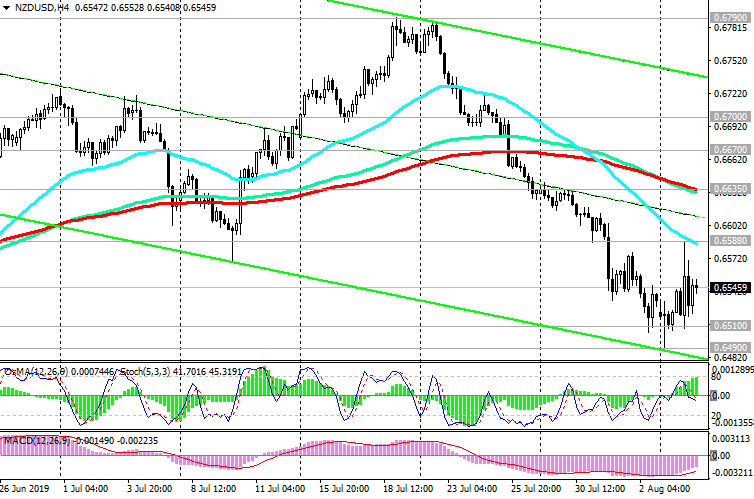TifiaFX
Established member
- Messages
- 641
- Likes
- 0
EUR/USD: Current Dynamics
09/07/2019
The dollar continues to strengthen after the publication on Friday of a strong report on the US labor market, which eased the pressure on the Federal Reserve System in the need to set lower interest rates. Last Friday, the EUR / USD pair broke through strong support levels of 1.1285 (Fibonacci level 23.6% of the correction to a fall from 1.3900 level that started in May 2014), 1.1270 (ЕМА200 on the 4-hour chart, EMA50 on the daily chart) and continued to decline. On Tuesday at the beginning of the European session, the EUR / USD pair is trading near the 1.1200 mark, remaining under pressure from the strengthening dollar.
According to the results of a poll conducted by the Federal Reserve Bank of New York on Monday, inflation expectations for the year and three years ahead in June reached 2.7% versus 2.5% and 2.6%, respectively in May.
The rise in inflation expectations also eases the pressure on the Fed to lower interest rates. Now market participants will closely follow the speeches of Fed Chairman Jerome Powell in Congress on the topic of economics and monetary policy.
If he shows a tendency toward a softer monetary policy, then the dollar may react by lowering. And, conversely, Powell’s tough position will cause a further strengthening of the dollar and increase the credibility of the Fed, especially amid Trump’s growing criticism of the Fed.
Powell's speeches are scheduled for Tuesday at 12:45 (GMT) and Wednesday at 14:00.
At the same time, recent comments by the leaders of the European Central Bank point to an early easing of monetary policy. It is possible that the ECB in July will hint at the possibility of lowering interest rates. This may happen in September with the start of a new bond purchase program worth 630 billion euros.
In general, the Eurodollar global bearish trend prevails. Any growth will be limited by resistance levels of 1.1350, 1.1410 (monthly maximum). Below the key resistance level of 1.1350 (ЕМА200 on the daily chart), short positions with targets located at the support levels of 1.1180 (June lows) and 1.1125 (Lows of the year) are preferable.
Support Levels: 1.1200, 1.1180, 1.1125
Resistance Levels: 1.1270, 1.1285, 1.1305, 1.1350, 1.1410, 1.1445, 1.1510, 1.1600
Trading Recommendations
Sell Stop 1.1190. Stop Loss 1.1240. Take-Profit 1.1180, 1.1125
Buy Stop 1.1240. Stop-Loss 1.1190. Take-Profit 1.1270, 1.1285, 1.1305, 1.1350, 1.1410
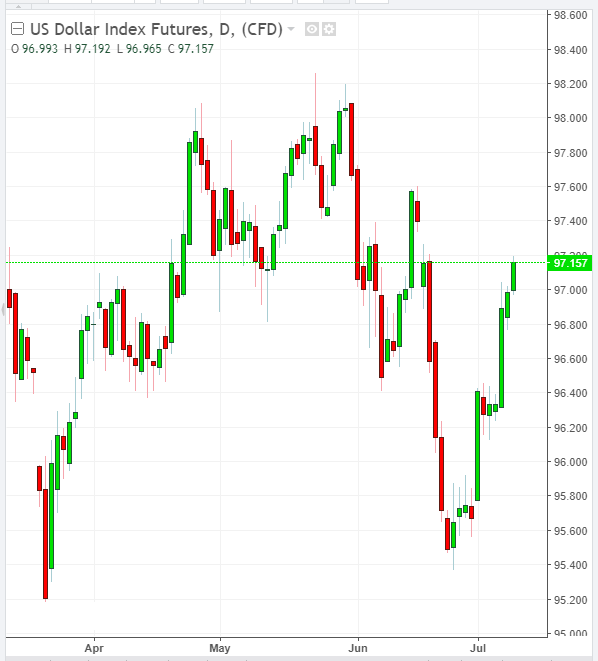
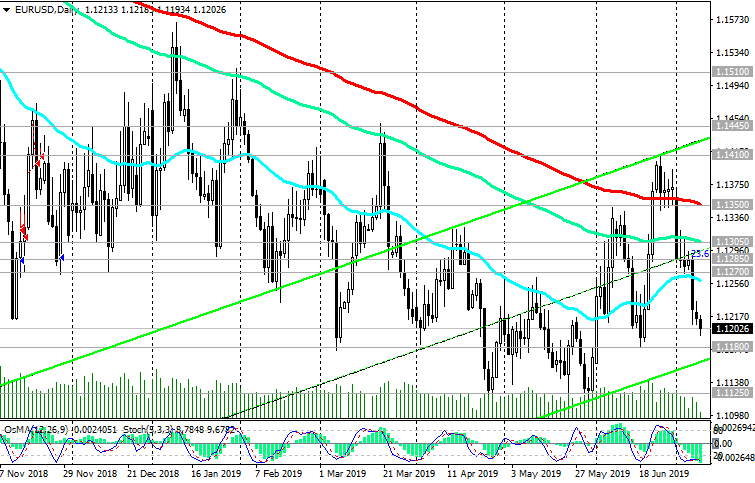
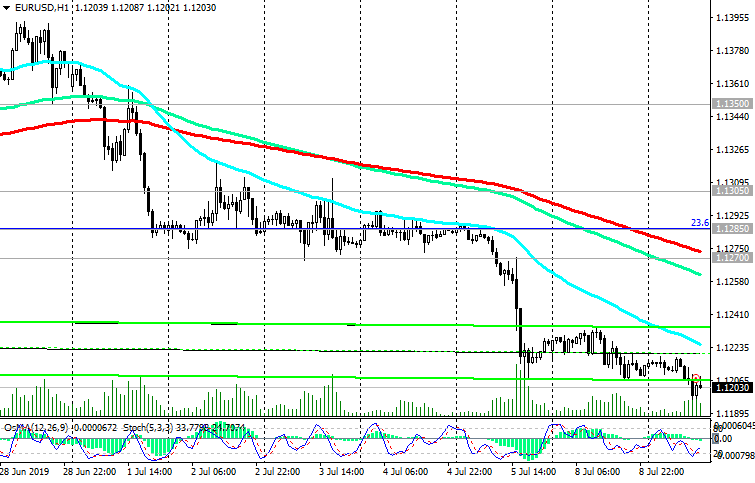
09/07/2019
The dollar continues to strengthen after the publication on Friday of a strong report on the US labor market, which eased the pressure on the Federal Reserve System in the need to set lower interest rates. Last Friday, the EUR / USD pair broke through strong support levels of 1.1285 (Fibonacci level 23.6% of the correction to a fall from 1.3900 level that started in May 2014), 1.1270 (ЕМА200 on the 4-hour chart, EMA50 on the daily chart) and continued to decline. On Tuesday at the beginning of the European session, the EUR / USD pair is trading near the 1.1200 mark, remaining under pressure from the strengthening dollar.
According to the results of a poll conducted by the Federal Reserve Bank of New York on Monday, inflation expectations for the year and three years ahead in June reached 2.7% versus 2.5% and 2.6%, respectively in May.
The rise in inflation expectations also eases the pressure on the Fed to lower interest rates. Now market participants will closely follow the speeches of Fed Chairman Jerome Powell in Congress on the topic of economics and monetary policy.
If he shows a tendency toward a softer monetary policy, then the dollar may react by lowering. And, conversely, Powell’s tough position will cause a further strengthening of the dollar and increase the credibility of the Fed, especially amid Trump’s growing criticism of the Fed.
Powell's speeches are scheduled for Tuesday at 12:45 (GMT) and Wednesday at 14:00.
At the same time, recent comments by the leaders of the European Central Bank point to an early easing of monetary policy. It is possible that the ECB in July will hint at the possibility of lowering interest rates. This may happen in September with the start of a new bond purchase program worth 630 billion euros.
In general, the Eurodollar global bearish trend prevails. Any growth will be limited by resistance levels of 1.1350, 1.1410 (monthly maximum). Below the key resistance level of 1.1350 (ЕМА200 on the daily chart), short positions with targets located at the support levels of 1.1180 (June lows) and 1.1125 (Lows of the year) are preferable.
Support Levels: 1.1200, 1.1180, 1.1125
Resistance Levels: 1.1270, 1.1285, 1.1305, 1.1350, 1.1410, 1.1445, 1.1510, 1.1600
Trading Recommendations
Sell Stop 1.1190. Stop Loss 1.1240. Take-Profit 1.1180, 1.1125
Buy Stop 1.1240. Stop-Loss 1.1190. Take-Profit 1.1270, 1.1285, 1.1305, 1.1350, 1.1410





